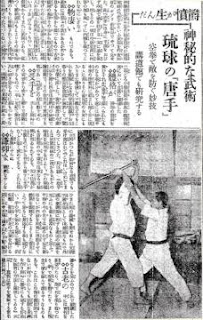Koryū is defined in Japanese martial arts as being anything created before the Meiji Restoration in 1868. After 1879, at the latest, including for the Ryūkyū Kingdom, new martial arts creations would be classed as gendai. However, that doesn’t mean that koryū disappeared. If someone learnt a method created before the Meiji Restoration, they were still studying koryū bujutsu. The reasons I would argue that the time period goes up to 1879 are that the Ryūkyū Kingdom became Okinawa Prefecture completely by 1879, and the rebellion in Japan against the new regime ended by that time, if we are to generalise to simplify. Therefore, a lot of what is practised in Funakoshi karate, for example, is koryū, even in the lineages with more changes from what Gichin Funakoshi himself taught, in my opinion. Although, the fewer the changes, the closer the versions are to the koryū kata and methods originally learnt by Funakoshi in Okinawa from just after the archipelago became part of / a prefecture of Japan.
Kata such as the Pin’an series and Meikyō are gendai, in that case, although they are based on koryū kata. Whereas kata and methods such as Kūsankū, Jion, Sēsan, Naihanchi, Jitte, Chintō, and many others are koryū, as they were created before the Meiji Restoration. However, I would also argue that it doesn’t matter too much as to if you practise koryū kata or gendai kata, so long as they are effective and based on actual fighting experience. That being said, the reason koryū methods are good, still, is because they were developed through actual fighting of all kinds, from battles to street-fights, and refined by many experts over centuries or longer. Therefore, it makes sense to keep these traditions alive.
S. R. Marshall
